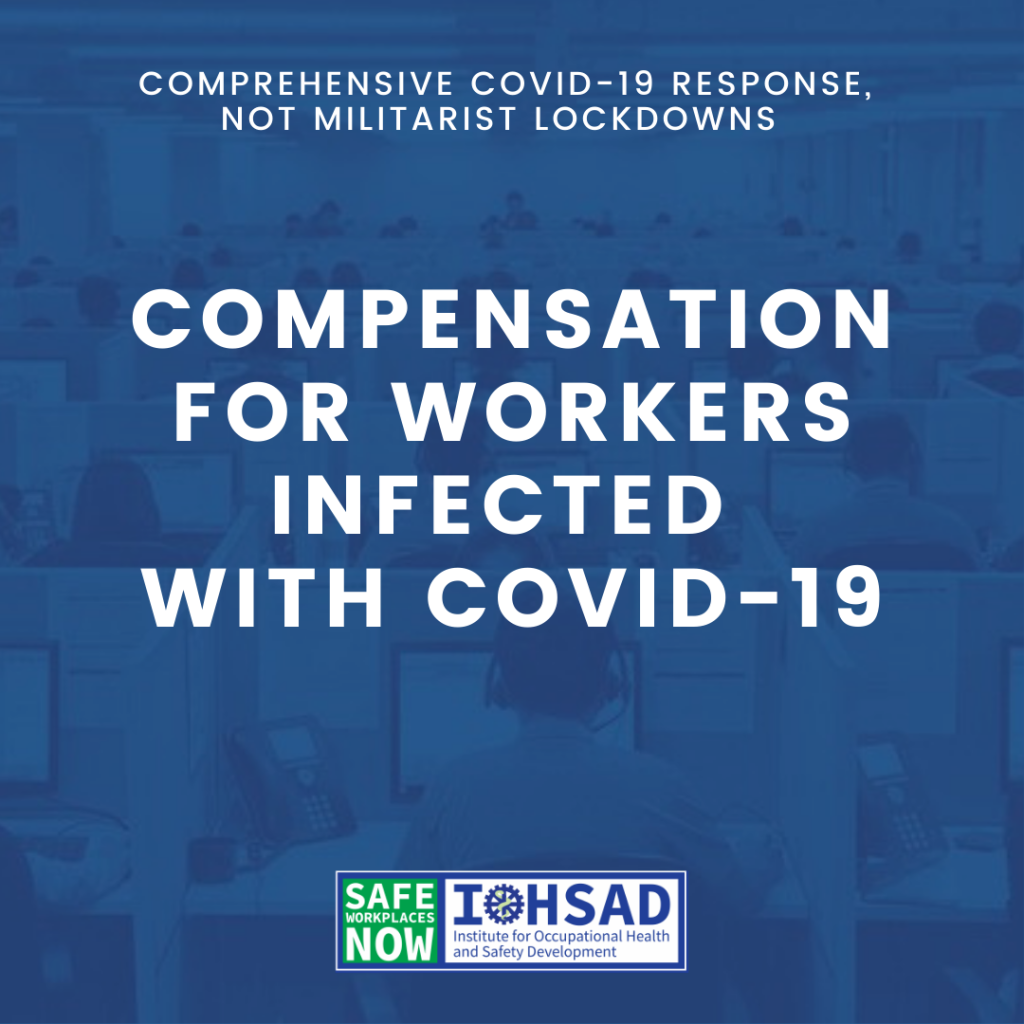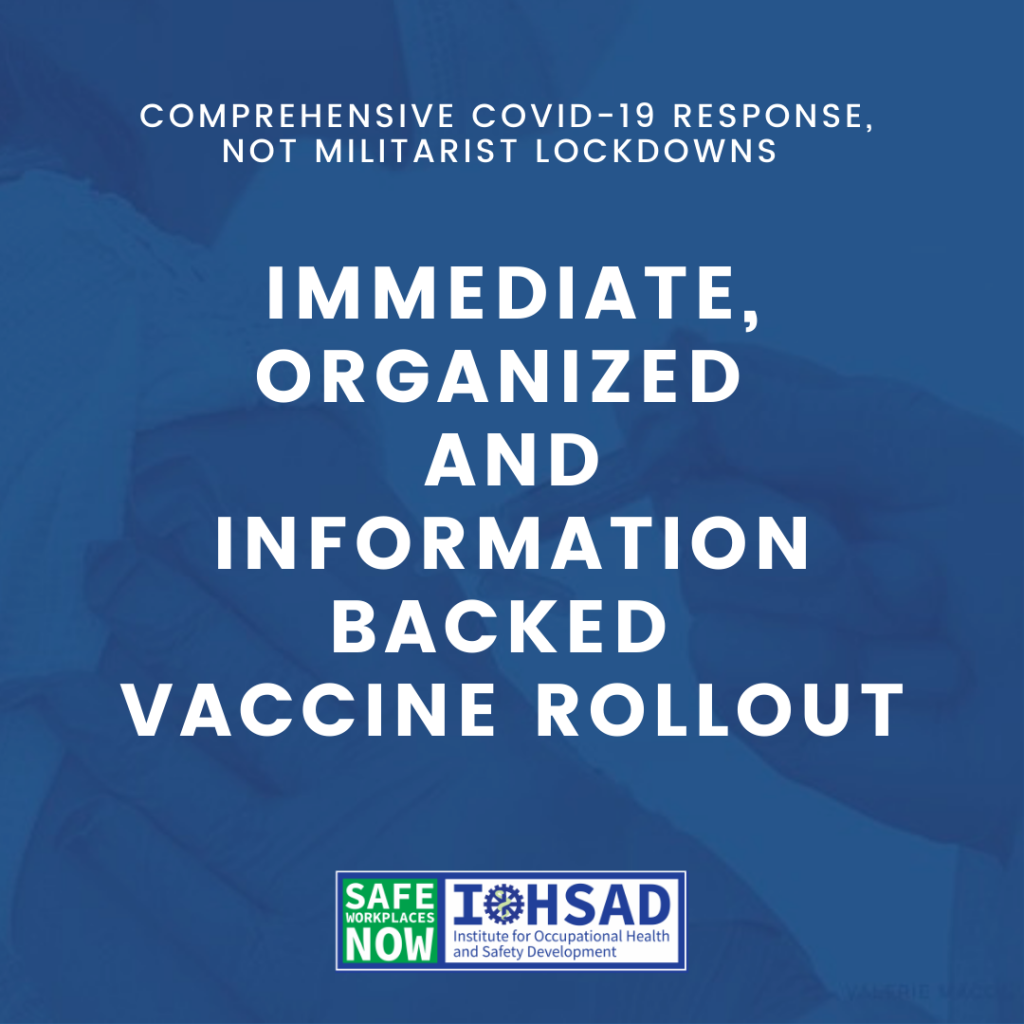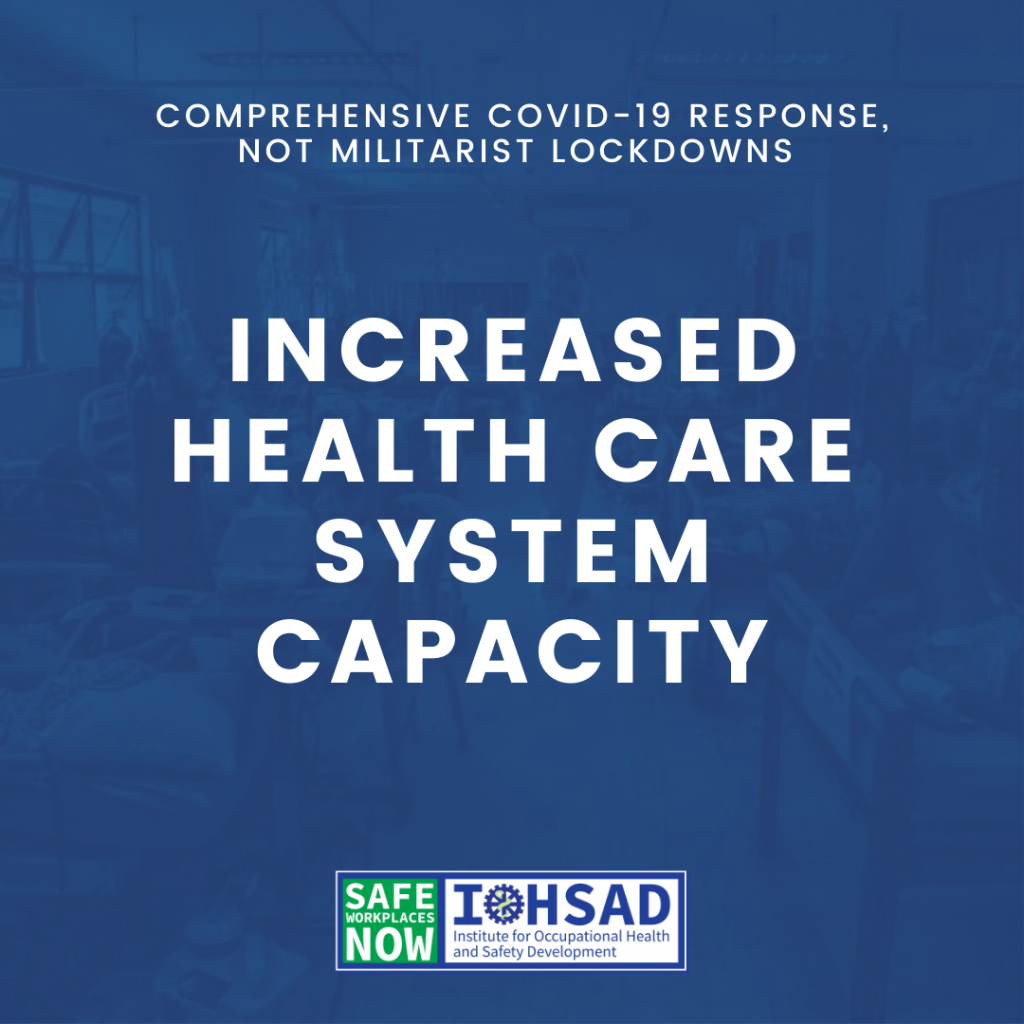Comprehensive Covid-19 response, not militarist lockdowns
Free, expansive, and timely testing. The government is far from reaching its testing capacity target of 100,000 tests per day with an average of 30,000-50,000 tests daily [1]. It even condones putting price caps on antigen tests and is unable to lessen the cost of RT-PCR tests in private laboratories [2-3]. With companies having different capacities to shoulder expenses but having the same responsibility to comply with protocols in order to remain operational, workers are forced to bear the costs. They are left to choose between spending almost a week’s worth of pay so they can be tested immediately or waiting in uncertainty so they can be tested for free by their LGUs. It is only when this conflict is addressed that the true extent of the infection can be visualized and control measures can be adjusted appropriately.
Swift and efficient contact tracing. This administration is able to identify only 6 contacts for every single person infected [4]. There are many reasons for this — from lack of personnel to incomplete disclosure of contacts by workers. Workers fear admitting symptoms and even infection because of the “no work, no pay” policy and possible discrimination [5]. This has led to multiple outbreaks, repeated company closures, and surges of infection in provinces. Crucial to breaking the chain of transmission is establishing the contacts among cases and placing them in quarantine before they infect others. This is especially important in workplaces with high traffic areas such as barracks/dormitories, locker rooms, canteens, bathrooms, and time-in and time-out stations that pose the threat of starting an outbreak. It is only when at least 37 contacts per infected person is traced do we stand a chance of containing COVID-19 successfully.
Urgent provision of paid pandemic leaves. Employers’ “no work, no pay” policy and contractualization schemes that are being legalized by the government have long caused workers to choose between their job or their health [6]. These forces workers to work despite being sick, and makes them hesitant to identify their close contacts, leading to multiple workplace outbreaks, company closures and even lay-offs. The legislation of House Bill 7909 or the Paid Pandemic Leave Bill aims to minimize that choice by requiring the government to uphold both workers’ jobs and health. Ensuring that financial assistance will be extended not only to those infected or tagged as close contacts but also those providing care for their sick family members and those placed on floating status, the law empowers workers to evaluate themselves truthfully and admit to having symptoms. This then paves the way for better case identification, efficient contact tracing, and successful containment of infection. The employers can also benefit from this, with less company closures, decreased cost on testing and treatment, and increased workers’ productivity. The economy can benefit from greater labor participation, continued development of skilled workers, and continued operation of businesses. With these in place, an efficient system of case identification, contract tracing, isolation, quarantine, and treatment is created, and the country can be saved from having repeated lockdowns. It is only when paid leaves are given that these positive effects are realized and optimized.
Appropriate compensation for workers infected with COVID-19. Workers daily face the risk of contracting COVID-19. The government should care for workers when they become sick — especially given its failure to protect them. While it has been difficult to claim compensation in the past year, the recognition of COVID-19 as an occupational disease is supposed to ease the process [7]. Three months after the release of this board resolution, however, it still has no Implementing Rules and Regulations. This has left workers and labor advocates uncertain of what to expect from this policy. Workers have been waiting for months for the result of their compensation claims. While it is difficult to pinpoint sources of infection, the hazard posed by COVID-19 cannot be easily eliminated from the workplace. The existing protocols — including personal protective equipment use — are inadequate to protect workers from getting infected. Workers should receive due compensation for contracting COVID-19 at work. This can help those previously infected to recover financially and lessen the anxiety of testing positive and the guilt of identifying contacts for tracing. These would improve infection control at work.
Immediate, organized and information-backed vaccine roll out. The government’s goal of achieving herd immunity this year will remain unattainable if deployment does not increase from the current average of 270,000 doses per day [8]. At this rate, herd immunity can be achieved only in 1.4 years[8]. In fact, out of the targeted 35.5 million frontliners in essential workers to be vaccinated, less than one million have been fully vaccinated[9]. On top of the shortage in the global supply in vaccines, concentration of the available supply in NCR, and non-compliance with the prioritization list, the shift to an online system has further made vaccines inaccessible to workers as most cannot afford gadgets or internet connection[4].The unvaccinated now run the risk not only of being infected with severe COVID-19 but also being sent to jail or kept at home [10,11]. Mandatory vaccination should be rejected and mandatory information and education campaign and informed consent must be strengthened. The country has a better chance of attaining herd immunity if it provides free and accessible vaccines to all workers regardless of job status.
Increased health care system capacity. This administration’s non-prioritization of health has forced the long-standing inadequacies of the health care system to support an impossible number of patients. The health care system has crumbled under the pressure of the pandemic. The increase in bed capacity and health infrastructures without the corresponding increase in health care workers, increase and prompt pay for those in service, and on-time arrival of needed medical devices and personal protective equipment has further demoralized healthcare workers [12-13]. The conversion of tertiary and specialty hospitals to COVID-19 referral centers and the continued decentralization of health services have displaced patients with other diseases and robbed the latter of options for care[14]. The greater budget allocation to the Department of Public Works and Highways has deprived the Department of Health of funding and pushed our health care system deeper into the grave [15]. Health is a right and it is the responsibility of the government to uphold it especially in the middle of a pandemic. While those with COVID-19 require immediate attention, the health care system should not have to choose whom it caters to. The health of all Filipinos matter, and can only be ensured if these glaring issues are corrected before we lose both our health resources and countrymen to this pandemic.
As a public health issue, the government’s pandemic response should be formulated with the participation of the public. If mutual understanding among all parties is achieved, cooperation will then follow. This will require an interdepartmental approach serving the best interest of the people. The sorry state that the country is in at present reflects the administration’s refusal to listen to the public. Those who are exposed to the problem are always the ones closest to the solution.
More than 1 million cases of COVID-19 infection later, workers are still recovering from the painful effects of this administration’s repeated lockdown schemes. The loss of 5.8 million jobs, the increase in the hunger rate to 16.8% and the increase in poor households to 49% in the past year have all left workers in fear [16-19]. This fear is magnified by Metro Manila’s return to Enhanced Community Quarantine [20]. One thing is for sure: the threat of the Delta variant and the lack of social protection caused by the government’s Bayanihan Act 3, its Covid-19 response law, is not a good combination[21,22].
References:
[1] Gonzales, C. (2021, March 30). Gov’t aims for 100,000 COVID-19 tests a day to help contain spread. Philippine Daily Inquirer. https://newsinfo.inquirer.net/1412869/govt-aims-for-100000-covid-19-tests-a-day-to-help-contain-spread
[2] Department of Health (2021, July 27). Advisory: Price cap for COVID-19 rapid antigen testing
[3] Department of Health (2020, Nov 27). Department Circular No. 2020-0391: Price range for COVID-19 Reverse Transcription-Polymerase Reaction (RT-PCR) testing
[4] Bonquin, C. (2021, July 13). Test, trace, treat: Finding the weakest link in PH’s COVID-19 response. CNN Philippines. https://www.cnn.ph/news/2021/7/13/COVID-19-pandemic-response-Philippines-SONA-Duterte.html
[4] Kilusang Mayo Uno Press Briefing (2020, July 29). Workers react to possible hard lock down. https://fb.watch/75Fvt7qTdn/
[6] Committee on Labor and Employment (2020, Dec 11). Deliberation on House Bill No. 7909, entitled, “An Act Mandating Paid Pandemic Leaves in the Private Sector in Light of a Declared Global Pandemic”. https://fb.watch/75FqqAp7m4/
[7] Employee Compensation Commission (2021, May 4). Board Resolution No. 21-04-14
Conditions for the Compensability of COVID-19 under the ECC List of Occupational and Work-Related Disease or Annex A of the Amended Rules on Employees’ Compensation (EC).
[8] Bantay Bakuna (2021, July 25). COVID-19 vaccination tracker as of July 18, 2021.
[9] DOH, IATF, NTF Covid-19 Vaccine Statistics as of July 25, 2021
NEDA (2021, May 28) Gov’t expands A4 priority group list, vaccination rollout to focus on areas with highest risk. https://www.neda.gov.ph/govt-expands-a4-priority-group-list-vaccination-roll-out-to-focus-on-areas-with-highest-risk/
[10] CNN (2021, June 22). Philippine President Rodrigo Duterte threatens to jail those who refuse Covid-19 vaccine. https://edition.cnn.com/2021/06/21/asia/philippines-duterte-covid-vaccine-jail-intl-hnk/index.html
[11] Geducos, A. (2021, July 29). ‘Don’t go out!’ Duterte orders authorities to escort unvaccinated people home. Manilla Bulletin. https://mb.com.ph/2021/07/29/dont-go-out-duterte-orders-authorities-to-escort-unvaccinated-people-home/
[12] The Solidarity of Health Advocates and Personnel for a Unified Plan to Defeat COVID-19 (SHAPE UP) Media and Public Briefing (2021, March 16). One year into the lockdown of incompetence. https://fb.watch/75IsVEbTtQ/
[13] Coalition for People’s Right to Health Press Briefing (2021, July 30). Dapat Lapat. https://fb.watch/75IC7ARei-/
[14] Lasco, G, & San Pedro, J. (2020, June 7). The “covidization” of health care. Philippine Daily Inquirer. https://opinion.inquirer.net/130544/the-covidization-of-health-care
[15] IBON Foundation (2020, September 23). The 2021 Budget: Infrastructure over health, aid and MSME support. IBON. https://www.ibon.org/the-2021-budget-infra-over-health-aid-and-msme/
[16] IBON Foundation (2021, March 23). Unemployment at record high, worse than reported. https://www.ibon.org/a-year-after-lockdown-unemployment-at-record-high-worse-than-reported/
[17] Lalu, G. (2021, July 13). 16.8% hunger rate calls for new round of cash aid for poor – Bayan. Philippine Daily Inquirer. https://newsinfo.inquirer.net/1459313/with-survey-revealing-high-hunger-rates-bayan-stresses-need-for-new-cash-assistance
[19] Dela Pena, K. (2021, July 14). Pandemic sinks PH poor even deeper. Philippine Daily Inquirer. https://newsinfo.inquirer.net/1459565/pandemic-sinks-ph-poor-further
[20] Romero, A. (2021, July 31). Metro Manila back to ECQ from August 6 to 20. The Philippine Star. https://www.philstar.com/headlines/2021/07/31/2116472/metro-manila-back-ecq-august-6-20.
[21]Department of Health Press Release (2021, July 22). DOH: Government further intensifying COVID-19 response with local transmission of delta variant
[22] Bajo, A. (2021, June 29). Zarate slams Duterte admin for “sleeping” on Bayanihan 3. GMA News. https://www.gmanetwork.com/news/news/nation/793347/zarate-slams-duterte-admin-for-sleeping-on-bayanihan-3/story/







